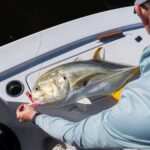
Bad Striper Bill in CT Falls Flat: Common Sense Shifts to Coastwide Solutions
This morning, the Connecticut Environment Committee held a hearing on House Bill 6248, a bill
Striped bass management will take priority in the next month as the ASMFC Striped Bass Management Board will meet in Annapolis on Wednesday, October 23 to review the 2024 stock assessment update.
ASGA advocated for swift board action relative to the assessment update and we got it. The trade-off was not delaying action for 2025 but giving up the ability to have state hearings for public comment. This was a tough call. It came down to the simple fact that striped bass are in deep trouble with five confirmed total spawn failures. We can’t afford to wait any longer. Our team has been engaged in every single striped bass meeting since the one in August. Based on our experience with those calls, we are certain another reduction will be necessary if we hope to rebuild by 2029.
Now, what did we learn from those calls? More than anything, we learned that years of poor management hurt the striped bass fishery. Letting Maryland and New Jersey get away with murder has left us with little to work with. If you want proof, catch and release mortality has fallen by 12%, even with an extremely tight slot. Release mortality is not the leading cause of fishing mortality anymore. Fewer people are fishing coastwide because, in many areas, fishing is not good. Maryland protected their striped bass commercial fishery, which historically takes about 80% of commercially harvested stripers. Maryland has killed recreational fishing at the expense of a few hundred commercial fishermen. Private recreational fishing is down 66% for wave four! This drop signifies a lack of effort due to a lack of fish. How can we not cut commercial harvest while killing the entire recreational fishing economy in the state (with no fish simultaneously entering the system due to failed spawns)?

There is another major issue that needs to be addressed. Why does New Jersey have a “bonus tag”? Does anyone honestly believe that New Jersey anglers are only keeping a few thousand juvenile striped bass a year? We’re not so sure. In 2018, a whopping 1,101 fish were harvested. In 2024, that number increased to 9,721. Are you expecting us to believe that for all the effort and access in New Jersey, only 9,721 striped bass from 24-28″ were taken from May to December in 2023?
New Jerseys deserves more time in the striper management spotlight. They won’t give up their bonus tag. They spoke against gear restrictions based on sound science that could potentially reduce release mortality (from the Massachusetts DMF striped bass post mortality research) and would rather have no targeting closures to crush the angling economy further. Yet, they are the only state that can kill two stripers per person during an 8-month season, while states like New Hampshire and Maine have a one fish per person limit and for half the time. The further north you go, the shorter the season and the bigger the impact of regulations.
Regarding “no targeting,” let’s look at what the Law Enforcement Committee (LEC) had to say about potential closures. The first frame is from an area with an active no-targeting closure. The second is report from the LEC:


We know that preliminary information from the Fisheries Effort Survey review shows a drastic overestimation in recreational fishing effort. While some have been quick to pile on about this overestimation, they haven’t figured out that this recalibration shows that commercial fishing accounts for far more than 10% of total striper harvest. Combine this recalibration will a massive decline in fishing trips due to lack of abundance and the commercial percentage of total harvest grows even more. We have heard time and time again, “Commercial is such a small portion of the fishery; focus on the recreational anglers doing all the damage!” This accountability cop-out is less accurate than ever before. It’s time for the commercial sector to participate in conserving this coastwide resource.
How can Maryland not take any commercial reductions? Why do Virginia and Delaware have gill net fisheries that intercept giant striped bass coming in to spawn? Some argue that a dead fish is a dead fish. It doesn’t matter once harvested. We don’t believe that for a second. A fecund female making way into her spawning river is a valuable fish. That individual fish can significantly contribute to the next abundant spawn that this fishery desperately needs.
It’s time to have some difficult conversations about the state of Atlantic striped bass. The ASGA community has never been shy when it comes to striper advocacy, and we won’t quiet down anytime soon. We are currently developing a letter to submit to ASMFC before the October 15 deadline. We implore striped bass advocates throughout the country to sign on and amplify the conversation. Now is the time to establish balance and commitment to conservation from all sectors of this fishery.

This morning, the Connecticut Environment Committee held a hearing on House Bill 6248, a bill

Photo Credit: A striper released in Connecticut waters, courtesy of Mike Querfeld. Connecticut House Bill 6248 (2025

Feature Photo Credit: Rex Messing and the SIMMS team fishing with Captain Jaime Boyle Albie

ASGA Launches “The Jack Project” in Collaboration with Florida International University, Mississippi State University and
We rely on our members and donations to keep fighting for a sustainable tomorrow in marine conservation.
GIVE THE GIFT OF FISHERIES CONSERVATION THIS HOLIDAY SEASON. SHOP ASGA GOODS THAT FUND FISHERIES RESEARCH & ADVOCACY CAMPAIGNS
JOIN ASGA IN CALLING FOR CRITICAL MANAGEMENT ACTION AFTER YEARS OF SPAWN FAILURES & POOR MANAGEMENT.
By using this website, you agree to our use of cookies. We use cookies to provide you with a great experience and to help our website run effectively. To learn more, please review our privacy policy.
3 Responses
Please listen to those who care about stripers. Save our fish.
Please take the presented information into full consideration. The longevity of one of the most iconic recreational fisheries is at stake.
Please read and understand the urgent situation at hand. This will not get better on its own and needs all of our cooperation.